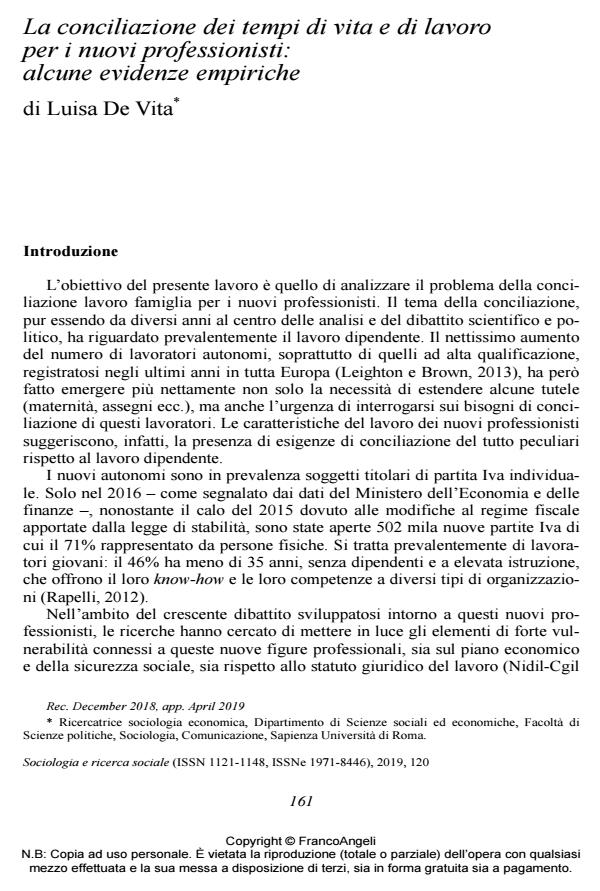La conciliazione dei tempi di vita e di lavoro per i nuovi professionisti: alcune evidenze empiriche
Titolo Rivista SOCIOLOGIA E RICERCA SOCIALE
Autori/Curatori Luisa De Vita
Anno di pubblicazione 2020 Fascicolo 2019/120
Lingua Italiano Numero pagine 21 P. 161-181 Dimensione file 211 KB
DOI 10.3280/SR2019-120007
Il DOI è il codice a barre della proprietà intellettuale: per saperne di più
clicca qui
Qui sotto puoi vedere in anteprima la prima pagina di questo articolo.
Se questo articolo ti interessa, lo puoi acquistare (e scaricare in formato pdf) seguendo le facili indicazioni per acquistare il download credit. Acquista Download Credits per scaricare questo Articolo in formato PDF

FrancoAngeli è membro della Publishers International Linking Association, Inc (PILA)associazione indipendente e non profit per facilitare (attraverso i servizi tecnologici implementati da CrossRef.org) l’accesso degli studiosi ai contenuti digitali nelle pubblicazioni professionali e scientifiche
Work-life balance has been at the center of debate for several years, although it has mainly involved dependent workers. This contribution is instead intended to explore this issue with specific reference to self-employment. The contribution presents the results of a research conducted by interviewing 135 professionals. The characteristics of this type of profession and the increase in recent years of the number of self-employed workers, suggests not only the need to understand how these workers respond to care needs but also to explore the processes of building their own work and family paths, their expectations and their wishes. In addition, the essay will explore and evaluate whether the different living and working conditions stimulate a greater gender symmetry in the division of domestic and care work.
Luisa De Vita, La conciliazione dei tempi di vita e di lavoro per i nuovi professionisti: alcune evidenze empiriche in "SOCIOLOGIA E RICERCA SOCIALE " 120/2019, pp 161-181, DOI: 10.3280/SR2019-120007